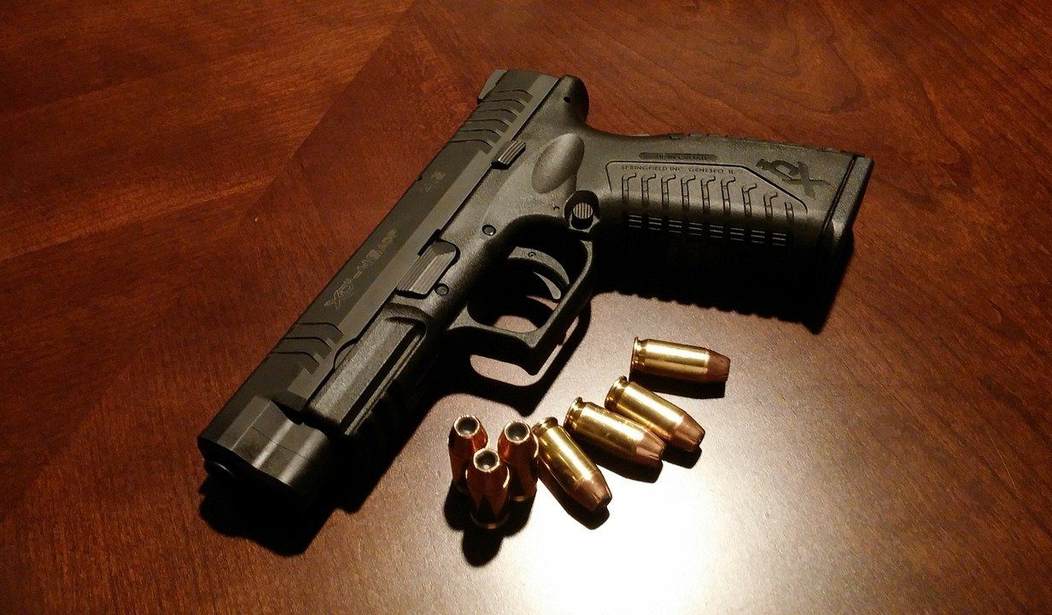The concept of microstamping has been around for years. The idea is that every shell casing gets a tiny little stamp that identifies the gun it’s been fired from.
This would, in theory, allow the police to link the firearm used with any shell casings found at the scene.
For many, this sounds like a fantastic tool that law enforcement needs. In an op-ed at the New York Daily News, three New York elected officials are pushing just that idea.
Sadly, officers responding to the too-frequent murders and shootings throughout the five boroughs are more often confronted with a bunch of bullet shell casings, no suspect information or cooperating witnesses, and few solid clues.
In fact, according to the FBI’s Criminal Justice Information Services clearance rate data, which shows the percentage of major crime investigations resulting in arrest and formal charging of the perpetrators, the nationwide clearance rate for murders in 2020 was just 54%. In New York City, which historically has had a much higher clearance rate, the Mayor’s Office of Criminal Justice reported a clearance rate of 56% for the first 11 months of 2021. These rates drop further when you include non-fatal shootings. There’s also a racial discrepancy in clearance rates. An analysis of U.S. cities found that law enforcement solves only 21% of firearm assault when the victim was Black or Hispanic, versus 37% for white victims.
That’s why we — a state senator, state assemblywoman and the Manhattan district attorney — are urging the Legislature to pass and the governor to sign “microstamping” legislation this session to significantly enhance the ability of law enforcement to solve violent gun crimes and help deter future crimes.
The legislation requires that new semiautomatic pistols either manufactured by or delivered to any licensed firearms dealer in New York be microstamp-ready. Microstamping is a new technology that puts an identifiable code, usually a series of numbers and letters, on the cartridge casing each time the gun is fired. Law enforcement can then use that code to identify the make, model and serial number of the pistol, without needing to recover any other evidence, such as the gun or bullets themselves and connect the cartridge case directly to the gun that fired it, much like the license plate on a vehicle allows law enforcement to identify the vehicle’s make, model and VIN code.
There’s just one problem with all of this. Microstamping simply doesn’t work.
First, let’s assume for the sake of argument that the process itself works as advertised. It doesn’t, but some will claim otherwise and there are points I want to get into beyond that aspect.
So, a gun microstamps all of this information onto the casing. The bad guy, who may well know this exists, foolishly does nothing about spent brass and leaves it behind. So then, the police are able to trace the gun. They find it was purchased by Joe Blow of 123 Anystreet, Brooklyn.
They’ve got their guy, right?
Nope.
We know from criminals’ own words that remarkably few buy their guns from retail establishments. They generally steal them, buy them on the black market, or something like that.
At most, you’re looking at six to seven percent of all cases where microstamping would lead the police directly to the bad guy. At most.
As for the rest, what happens? Nothing. Nothing at all.
And that doesn’t address guns coming in from out-of-state. Those firearms will not comply with New York state law and if they’re coming in for illicit sale, that’s going to just be another feature making those firearms attractive.
Additionally, the parts that will do the microstamping? Those parts can be replaced. Someone buying a firing pin from another state and replacing that one in their weapon suddenly makes it “untraceable.”
That brings up another point, such as how all of this is like all the talk of gun tracing with regard to unserialized firearms. The truth is that tracing only plays a factor in a small percentage of crimes. Most of the time, police have to use more mundane methods for catching criminals such as talking to witnesses, checking for video cameras in the areas, things like that.
Once they catch the bad guy, they can use ballistics to determine if a weapon found with the suspect was used or not, but the truth of the matter is that microstamping won’t actually do much to benefit the police.
What it will do, though, is throw up barriers for legal gun owners and gun buyers while doing next to nothing to criminals.
And all that is assuming the process itself actually works flawlessly, which I’m not banking on.








Join the conversation as a VIP Member